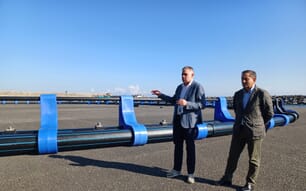Developed by the South Australian Government research institute SARDI, the model simulates ocean circulation and how nutrients from aquaculture, industry and waste water affect phytoplankton, the tiny plants at the base of the marine food web.
SARDI Oceanography leader, Associate Professor John Middleton, said the model is a valuable new way to manage spatial planning of aquaculture sites for valuable finfish, such as Southern Bluefin Tuna and Yellowtail Kingfish.
“This model enables scientists and aquaculture managers to test the impacts of different scenarios of fish farming on a particular region, as well as the localised impacts of individual farm leases,” he said.
“By understanding ecological limits, we can identify where and how many farms can be sustainably supported.”
A/Professor Middleton said such knowledge-based management tools would support future expansion.
“The model has been applied to a tool for spatial planning through a graphical user interface we call CarCap1.0,” he said.
“This tool allows managers and producers to rapidly assess the suitability of new and existing aquaculture finfish sites at the scale of the gulf, region or lease and help to inform on optimal feeding rates so as to maximise financial return while minimising impact on the environment.
“The system is attracting interest from industry because of its ability to help producers to improve feeding regimes and the seasonal placement of fish within their leases.
“Simply, this means producers should be able to grow bigger and fatter fish faster, and increase their profitability without harming the environment.”
The spatial planning tool was developed with funding from the Fisheries Research and Development Corporation (FRDC) and Primary Industries and Regions South Australia (PIRSA) under the Innovative Solutions for Aquaculture Planning and Management Programme.
“Much of this capability depends on understanding the flushing or dispersal by ocean currents of nutrients from both natural and human induced sources into and out of the Gulf,” A/Prof Middleton said.
“The very good news is that the natural input of nutrients into the gulf is about 18 times greater than human related nutrient inputs. This means that the Spencer Gulf is currently in good health and balanced well with current aquaculture activity.”
Data crucial to the development of the model was collected through the Southern Australian Integrated Marine Observing System (SAIMOS), which was established five years ago by SARDI, Flinders University and the Australian Government to monitor the coastal boundary currents and planktonic systems.
The data covers a vast range of factors from ocean circulation to seasonal variations in climate and rainfall, as well as temperature, salinity, oxygen, phytoplankton and zooplankton levels, as well as waste nutrients produced by farmed finfish, industrial and natural sources.




